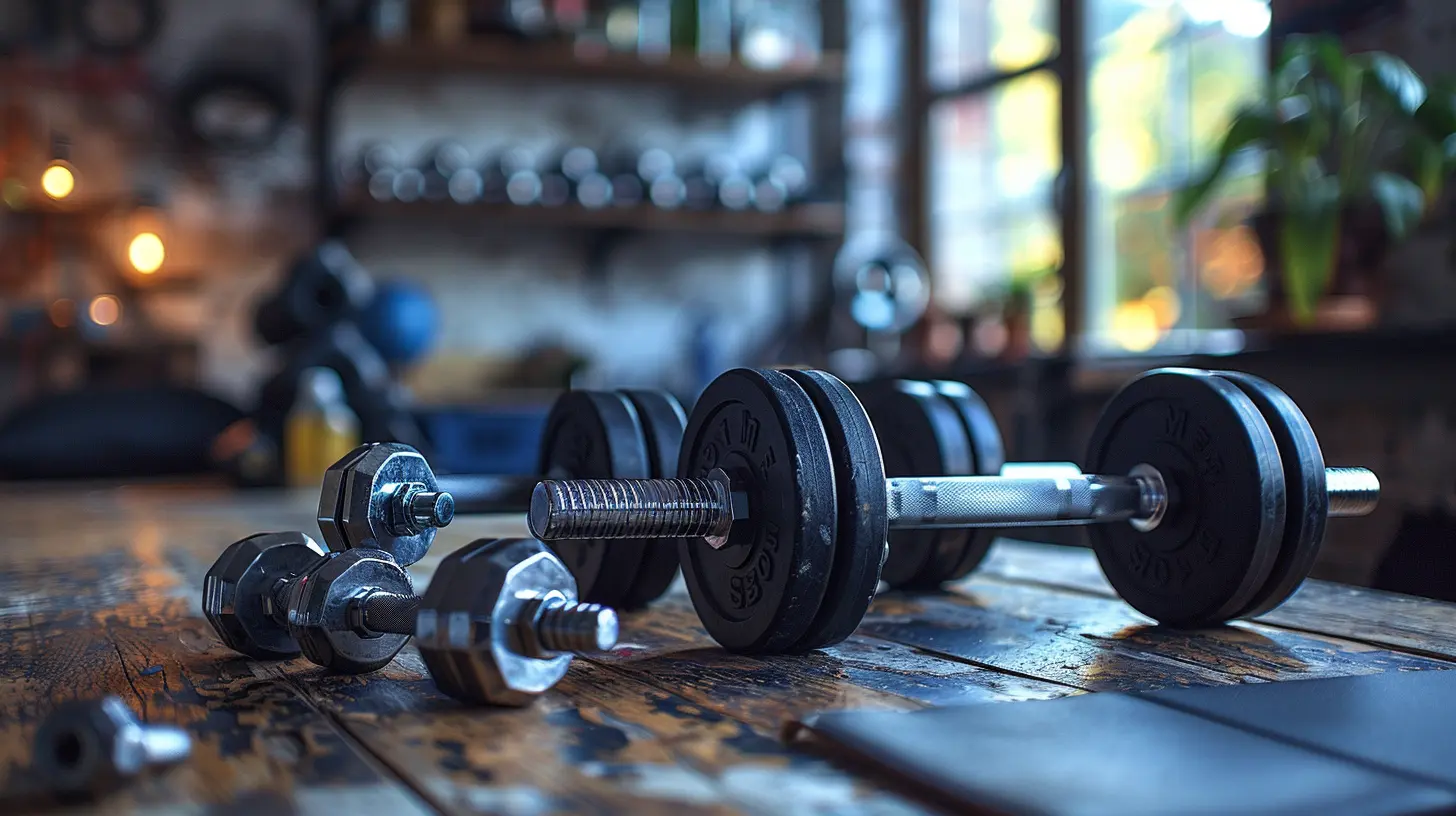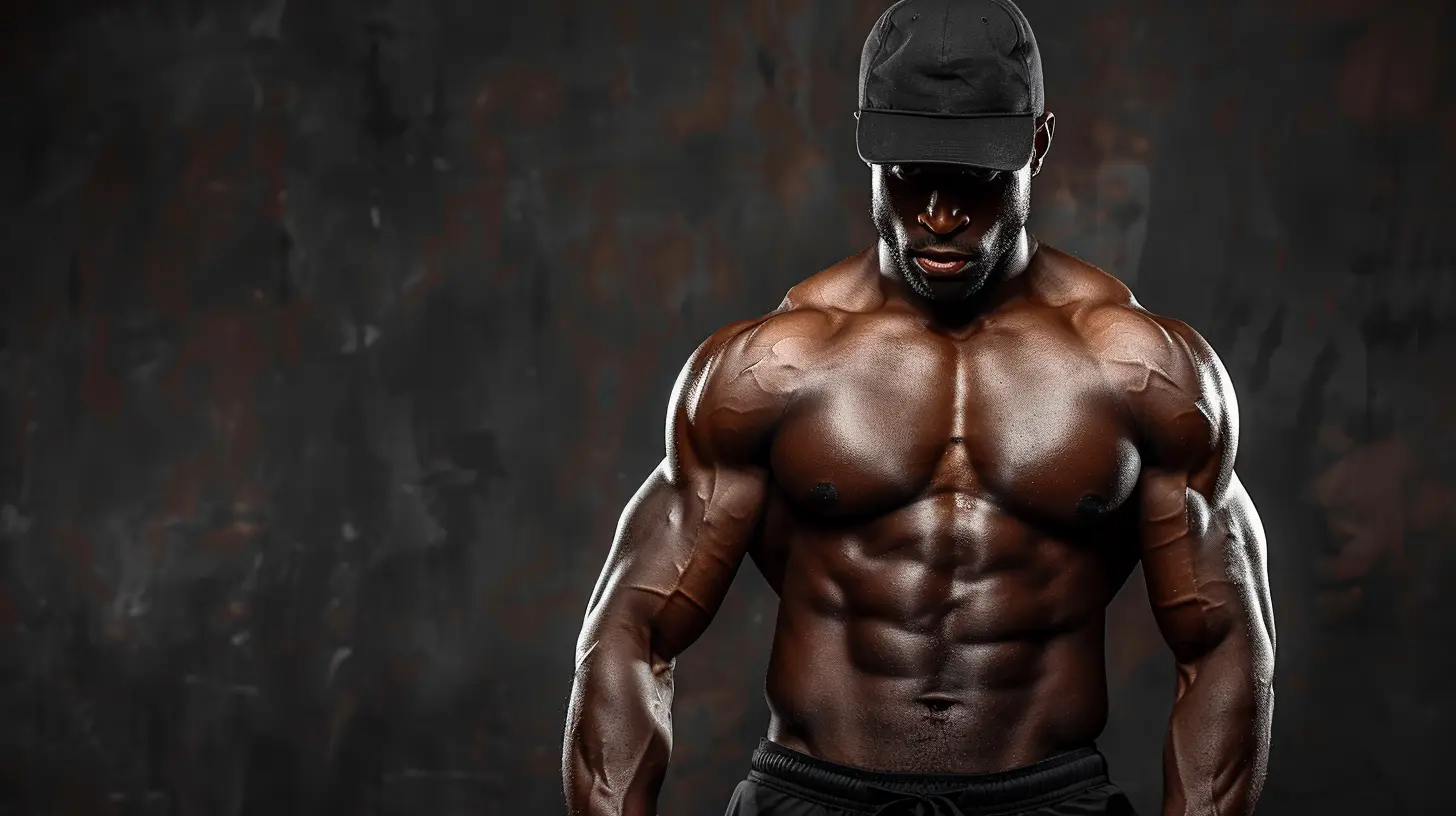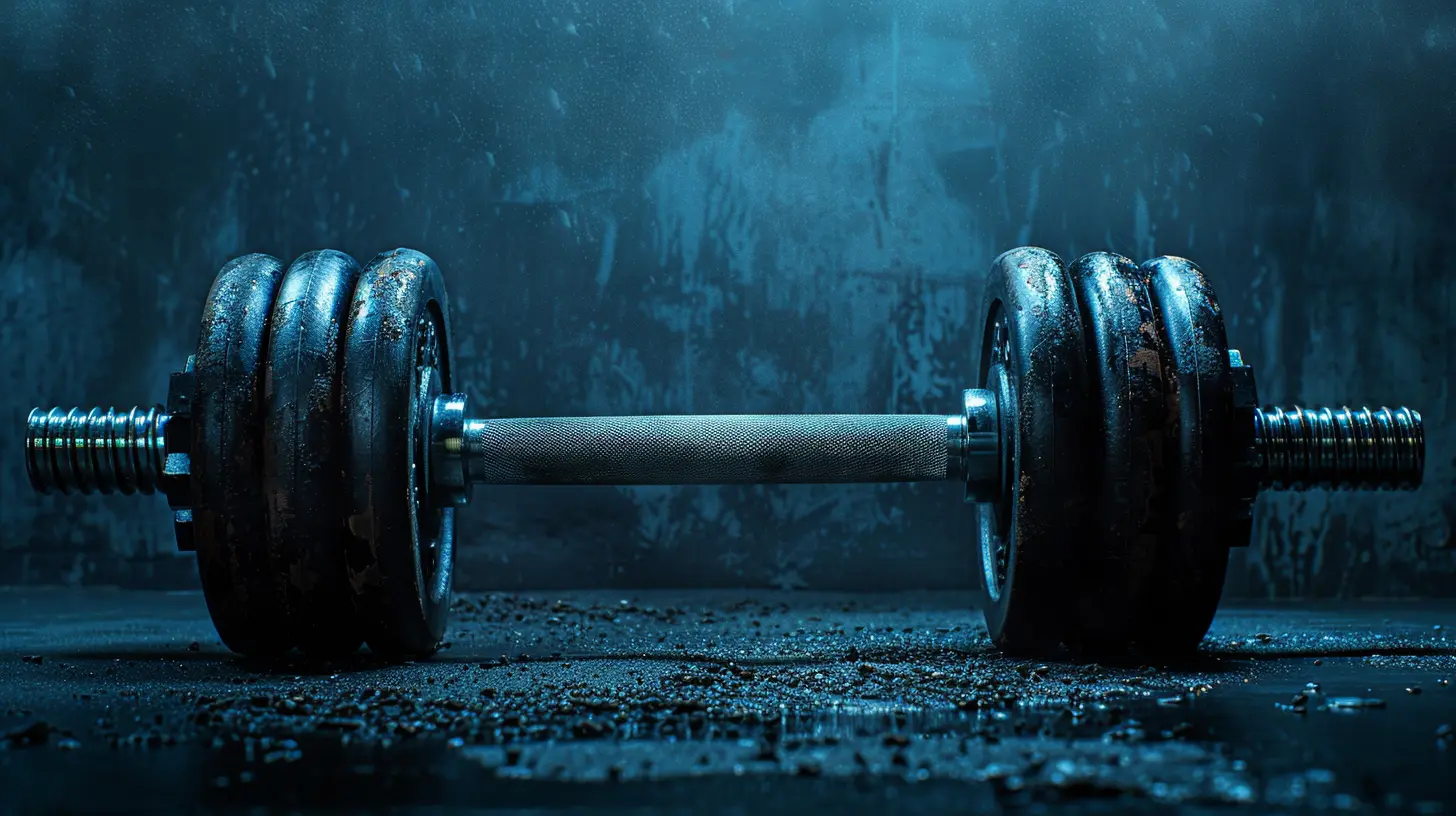Beginner’s Home Workout Guide for Building Muscle
22 December 2024
So, you're finally ready to ditch the excuses and start building muscle, huh? Awesome! Whether you're avoiding the gym's monthly membership fees, the intimidating machines, or the overcrowded weight sections, a home workout can be just as effective for building muscle—if you know what you're doing.
This guide is all about helping beginners (like you!) kickstart a muscle-building journey from the comfort of your living room, garage, or backyard. No fancy equipment needed, just a willingness to show up, get moving, and make those gains. Ready? Let’s jump in! 
Why a Home Workout?
Convenience is Key
Let’s face it: life can get busy. Between work, school, family responsibilities, or binge-watching your favorite Netflix series, it’s hard to carve out time for the gym. The beauty of a home workout is that you don't have to factor in commute times. Walk into your living room and—bam—you’re ready to go.Gym Anxiety Isn’t a Thing at Home
Ever walked into the gym and felt like everyone was staring at you? Yeah, it’s pretty common. Working out at home eliminates that pressure. You can lift, sweat, and make all the grunting noises you want without feeling judged.Save Money
Gym memberships can be pricey. Plus, if you’re new to working out, it’s smart to see if you can stay consistent at home before investing in fancy equipment or a trainer.
The Foundations of Building Muscle at Home
Okay, let’s get one thing out of the way. Building muscle is not rocket science, but it does require three key ingredients:1. Progressive Overload – Simply put, this means continually challenging your muscles to do more over time. Think more reps, heavier weights (or resistance), or harder exercises.
2. Consistency – Rome wasn’t built in a day, and neither are muscles. You’ve got to show up regularly. Stick to your routine and trust the process.
3. Nutrition – You can’t outwork a bad diet. To build muscle, you need to fuel your body with sufficient protein, healthy fats, and carbs. 
Warm-Up: Get Your Body Ready
Skipping the warm-up is like trying to drive a cold car in the dead of winter—it’s rough, and you’re bound to stall. Warming up preps your muscles, increases your heart rate, and reduces the risk of injury.Quick 5-Minute Warm-Up Routine:
- Jumping jacks – 1 minute- Arm circles – 30 seconds forward, 30 seconds backward
- High knees – 1 minute
- Bodyweight squats – 1 minute
- Plank hold – 1 minute
Boom, you’re ready to go! 
Beginner-Friendly Home Workout Routine
No gym equipment? No problem. You can use your body weight to build muscle effectively. Here’s a simple workout plan you can follow 3-4 times a week:1. Push-Ups (Chest, Shoulders, Triceps)
Classic, effective, and versatile. Push-ups are your bread and butter for building upper body strength.How to Do It: Start in a plank position, hands slightly wider than shoulder-width apart. Lower your chest toward the floor, then push yourself back up.
Start With: 3 sets of 8-12 reps
Pro Tip: Too hard? Drop to your knees. Too easy? Try incline or decline push-ups.
2. Bodyweight Squats (Quads, Glutes, Hamstrings)
Squats are like the king of leg exercises. You’ll feel these in your thighs and booty!How to Do It: Stand with feet shoulder-width apart. Lower your body as if sitting back into a chair, keeping your chest up and your knees behind your toes. Push back up to standing.
Start With: 3 sets of 8-15 reps
Pro Tip: Want a challenge? Hold something heavy—like a backpack full of books or water bottles.
3. Plank (Core)
Planks work your entire core and stabilize your body for other movements. It’s like the Swiss Army knife of ab exercises.How to Do It: Get into a push-up position but rest on your forearms. Keep your body in a straight line from head to heels. Hold.
Start With: 3 sets of 20-30 seconds
Pro Tip: Too easy? Add side planks for an extra burn.
4. Glute Bridges (Glutes, Lower Back)
Don’t neglect your backside! Glute bridges are great for building your posterior chain muscles.How to Do It: Lie on your back with your knees bent, feet flat on the ground. Push through your heels to lift your hips toward the ceiling, then lower back down.
Start With: 3 sets of 10-15 reps
Pro Tip: Add weight (like a water bottle or filled backpack on your hips) once it gets too easy.
5. Bent-Over Rows (Back, Biceps)
If you’ve got something heavy at home like a dumbbell or even a gallon of water, you can train your back and biceps with rows.How to Do It: Stand with feet shoulder-width apart, hinge forward at the hips, and let the weight hang in front of you. Pull it toward your waist, squeezing your shoulder blades together, then lower slowly.
Start With: 3 sets of 8-12 reps (each side)
6. Burpees (Full Body)
Love them or hate them, burpees are a killer full-body exercise that gets your heart rate up.How to Do It: From standing, drop into a squat, kick your legs out into a push-up position, do a push-up, jump back to your feet, and leap into the air.
Start With: 3 sets of 5-10 reps
Stretch and Cool Down
Stretching post-workout helps reduce soreness and improves flexibility. Spend 5 minutes stretching the major muscle groups you worked on.Quick Cool-Down Stretches:
- Hamstring stretch – Hold each leg for 20-30 seconds.- Chest opener – Interlace your fingers behind your back and pull arms upward.
- Child’s pose – Stretch your back and shoulders by sitting back on your heels and reaching forward with your arms.
Common Mistakes to Avoid
Now that you’ve got your routine, let’s make sure you’re not sabotaging your progress.- Skipping Rest Days: Muscles grow during recovery, not when you’re working out. Take 1-2 rest days a week.
- Improper Form: Focus on quality over quantity. Doing 5 reps with proper form is better than 15 sloppy ones.
- Not Eating Enough Protein: For muscle repair and growth, aim for at least 0.8-1g of protein per pound of body weight daily.
- Overthinking It: Just start! You don’t need to have it all figured out. Consistency is more important than perfection.
Tracking Your Progress
Recording your workouts can help you stay motivated and track improvements over time. Jot down your sets, reps, and any modifications you make. Not feeling stronger after a few weeks? Bump up the intensity (hello, progressive overload!).FAQs About Home Workouts
Q: Can I build muscle without weights?A: Absolutely! Your body weight is one of the best tools for building muscle. Plus, you can always use household items for added resistance.
Q: How long before I see results?
A: You'll likely notice strength improvements within 2-4 weeks and muscle growth after 8-12 weeks, depending on your consistency and diet.
Q: Do I really need to stretch?
A: 100%. Stretching helps with recovery and keeps your muscles flexible, reducing the risk of injury.
Final Thoughts
Building muscle at home as a beginner doesn’t require fancy equipment or hours of time. Take it one step, one workout, and one day at a time. The most important thing? Make it a habit. Remember, even the most ripped athletes started somewhere, so give yourself the grace to be a beginner.Now put on your favorite workout playlist, grab your water bottle, and start building the muscles you’ve always wanted. You've got this!
all images in this post were generated using AI tools
Category:
Home WorkoutsAuthor:

Madeline Howard
Discussion
rate this article
11 comments
Emory Kearns
Forget the gym! With this guide, you’ll be sculpting muscle at home while your couch potato friends stay stuck on the sofa. Time to lift yourself up and get those gains!
April 6, 2025 at 4:21 AM

Madeline Howard
Thanks for the enthusiasm! With dedication and the right techniques, anyone can achieve great results at home. Let's get those gains together! 💪
Ember Alexander
Great tips for beginners!
March 31, 2025 at 2:59 AM

Madeline Howard
Thank you! I'm glad you found the tips helpful! Happy lifting! 💪
Evangeline McInnes
Welcome to the world of muscle-building, where the only thing getting bigger is your commitment to not snack on those dumbbells! Remember, each rep is just a mini celebration of you not staring at the couch. Let’s lift and laugh our way to buffness!
February 2, 2025 at 5:25 PM

Madeline Howard
Thank you! Commitment and a little humor make all the difference. Let’s lift and enjoy the journey together! 💪😄
Theodora Barnes
Looking to transform your living room into a mini gym? Just remember: every rep counts, especially when lifting that pizza slice! With this guide, you’ll build muscle faster than you can say “where’s my workout playlist?” Let’s pump it up—pizza optional! 🍕💪
January 26, 2025 at 4:19 AM

Madeline Howard
Thanks for the fun reminder! Every little effort counts, whether it’s lifting weights or that pizza slice. Let’s get those muscles growing! 🍕💪
Rory Fuller
Excited to explore this guide! Can’t wait to discover new ways to build strength at home!
January 20, 2025 at 5:28 PM

Madeline Howard
Thank you! I'm thrilled to hear you're excited to start your journey. Enjoy exploring the guide!
Cadence Thomas
Muscle growth starts at home! Embrace consistency, mix strength routines, and don’t forget to feed those gains with proper nutrition!
January 11, 2025 at 5:36 AM

Madeline Howard
Absolutely! Consistency and a balanced approach to workouts and nutrition are key to muscle growth, especially at home. Keep pushing and fueling your body right!
Deborah McNaughton
Love this guide! As a beginner, it’s easy to feel overwhelmed, but this makes it approachable and fun. Simple workouts at home are perfect for busy schedules, and the tips on technique help build my confidence. Excited to start my muscle-building journey! 💪✨
January 7, 2025 at 4:09 PM

Madeline Howard
Thank you so much! I'm glad to hear the guide is helpful and that you're excited to start your journey. You've got this! 💪✨
Jet Bowers
Great article! The tips for beginners are practical and easy to follow. I appreciate the emphasis on proper form and gradual progression. This guide is a fantastic resource for anyone looking to start their fitness journey at home.
December 31, 2024 at 4:22 PM

Madeline Howard
Thank you for your kind words! I'm glad you found the tips helpful and practical for your fitness journey. Happy training!
Ember Sullivan
Great article! Starting a home workout journey can be daunting, but this guide makes it accessible. Remember, progress takes time—celebrate every small win along the way! You got this!
December 29, 2024 at 5:36 PM

Madeline Howard
Thank you for your kind words! I'm glad you found the guide helpful. Celebrating small wins is key to staying motivated on this journey! 💪
Phaedron McMichael
This article provides a solid foundation for beginners eager to build muscle at home. However, it could benefit from emphasizing the importance of proper form and gradual progression to prevent injuries. Additionally, integrating nutrition tips would enhance its comprehensiveness, supporting readers’ overall muscle-building efforts effectively.
December 29, 2024 at 3:30 AM

Madeline Howard
Thank you for your valuable feedback! I appreciate your suggestions and will definitely consider emphasizing proper form, gradual progression, and nutrition tips in future updates to enhance the guide.
Hailey McAnally
Great tips! Consistency and proper form are essential for results.
December 24, 2024 at 5:42 PM

Madeline Howard
Thank you! I'm glad you found the tips helpful. Consistency and form truly make a big difference. Keep it up!
MORE POSTS

Functional Fitness You Can Practice at Home

Egg-Free Cooking: Delicious Alternatives for Allergy Sufferers

What to Pack in Your Hospital Bag for Delivery

Transforming Self-Criticism Into Kindness with Mindfulness

How to Incorporate Probiotic Foods into Your Recipes

How to Safely Introduce Allergens to Babies and Toddlers

Exploring the Latest Advances in Diabetes Research

Common Postpartum Complications: What to Watch For